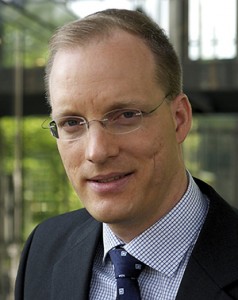Bayer: Lighting up the market
Germany’s Bayer on 25 June launched the largest euro hybrid bond transaction, a Eu3.25bn dual tranche deal, as part of a major acquisition financing. In doing so, it returned to an instrument it previously issued in 2005. Dr Sven Vorstius, head of capital markets at Bayer AG, explains how hybrids fit into the corporate’s strategy.
Bank+Insurance Hybrid Capital: What were the rationale and the most important drivers for Bayer issuing a hybrid bond at the time of the acquisition?
Dr Sven Vorstius, Bayer AG: Hybrid capital has been used in Bayer’s funding mix since 2005. Having at that time been a very special instrument and a means of supporting our rating, hybrid capital has since developed into a more standardised instrument with a broad investor base. This makes it today a product that is relatively easy to handle, on the one hand, and a fair to favourably priced instrument from the cost of capital perspective. In this context, it was the product of choice to support our funding activities in the recent acquisition of Merck’s Consumer Care Business, which created a total funding need of $14.2bn.
BIHC: All the hybrid instruments issued by Bayer have been dated: what is the rationale for that? How important was the equity accounting for you?
Vorstius, Bayer: There are still various ways to design some of the details of the hybrid bond structure in one or another way. We had no need to book the hybrid bond as equity accounting-wise, e.g. to achieve certain ratios. We rather prefer to have an IFRS treatment as debt because this allows us to trade interest rate derivatives and apply hedge accounting as we actively manage our interest rate exposure over time.
BIHC: Did you consider other alternative products? What were the main considerations to go for the one or the other?
Vorstius, Bayer: Obviously the alternative to a hybrid bond is equity. Besides the theoretical economic cost benefit of the hybrid compared with equity, you have no dilution and in our case the possibility of tax deductibility of the interest expense. Of course, you pay something for the equity-like features, even with an all-time low subordination spread, making the hybrid still more expensive then straight debt. We have had experience of hybrids through Bayer’s first hybrid bond, from 2005, and our capital structure allowed for substantially more funding of that kind. The experiences we had in this context with the rating agencies were sound and reliable. This was also proven in the context of the current transaction.
The aforementioned cost aspects as well as the complexity of the hybrid transaction compared to equity clearly favoured more hybrid capital. We were able to accomplish the full process from kick-off to market launch of the hybrid within four weeks. The market environment also supported such a transaction at this point in time, making the decision even more straightforward.

BIHC: Would you have considered financing your acquisition with hybrids also at a higher level (i.e. cost) or was it just an opportunistic financing? What is your view on current market levels and on the potential evolution of the market?
Vorstius, Bayer: As an issuer we always look at the respective cost of an instrument first, but a number of further non-quantitative aspects are no less important. We strongly value a diversified investor base. In addition, our capital structure had more room for this instrument and this matched very nicely with the good demand from investors at this point in time. But we would definitely not call it an opportunistic financing from the cost side. We would have probably been prepared to do such a transaction even in less strong markets. In the current situation we had to pay up very little to have the benefit of investor diversification if you look at the portfolio from a debt financing perspective, which was very welcome.
BIHC: How do you determine the mix of currencies and markets that you tap? How did you decide the best choice of maturities?
Vorstius, Bayer: The tenors of the issuance are driven by the permanence characteristics of the instrument, firstly, and then in addition by some technical requirements. In the context of the current financing activities, we would also have had need for US dollars. But the higher documentation requirements and the currently higher interest cost favoured the euro market.
BIHC: What were the main challenges you faced before issuing?
Vorstius, Bayer: We continuously have detailed exchanges with the rating agencies. This, plus the trustful relationship we have with both agencies, did help make for a very smooth process during this transaction. The market regards the structure we used as a now common and reliable documentation framework. Investors’ appetite and liquidity for our paper is strong in basically all markets and surely helped make this transaction very efficient. The challenge, we felt, was rather to get to market quickly after the acquisition was signed and to manage all internal and external transaction processes accordingly.
BIHC: Bayer issued its first hybrid back in 2005. The structuring requirements of rating agencies have evolved significantly in the meantime. Was the equity content on the old instrument maintained by the rating agencies?
Vorstius, Bayer: Yes. The outstanding hybrid did not play a role in this year’s transaction.
BIHC: In case of non-call, what would be the treatment? In case of call, what kind of structure and maturity would you consider?
Vorstius, Bayer: We understand that investors have clear expectations when hybrids reach the first call date. We nevertheless cannot pre-empt any decision that we will only take at the time when such an event is due to occur and we do not want to speculate here.
BIHC: Do you expect any further evolution in rating agency methodologies?
Vorstius, Bayer: We consider the treatment of hybrid bonds by the rating agencies to be broadly stable for the foreseeable future. We understand that besides a number of pre-defined criteria the rating agencies apply in any case a company-specific assessment in their overall rating evaluation. This will become even more meaningful if more first call dates of various hybrid bonds in the market approach and companies cope with that situation differently.
BIHC: Do you have further plans or any strategic intention to diversify in currencies or to build-up your (hybrid) curve going forward?
Vorstius, Bayer: In general, we see benefits if diversification into other currencies becomes available, but for us this is not a priority.
We do not look at having multiple hybrid bonds outstanding from an interest rate curve perspective. As the total hybrid volume outstanding in our portfolio increased substantially with this year’s transaction it is more important for us to analyse and structure potential losses of equity credit over time.

